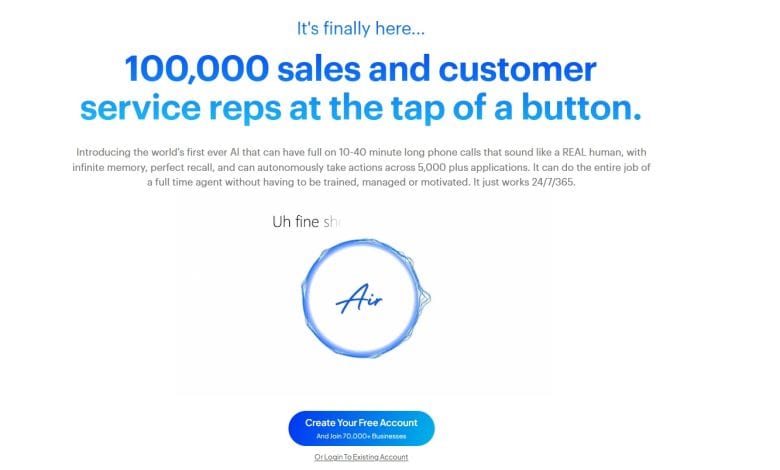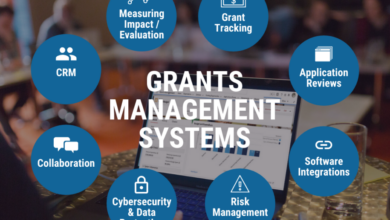Air ai: Revolutionizing the World of Artificial Intelligence

Air ai is an innovative AI-driven solution that is making waves in the world of artificial intelligence. It is a groundbreaking technology that is transforming the way we interact with AI systems. With its advanced algorithms and machine learning capabilities, Air ai is revolutionizing the way we optimize air quality and energy efficiency in our homes and businesses. This article explores the potential of Air ai and how it is reshaping the world of artificial intelligence.
Key Takeaways:
- Air ai is an AI-driven solution that is revolutionizing the world of artificial intelligence
- With advanced algorithms and machine learning capabilities, Air ai optimizes air quality and energy efficiency
- Air ai has the potential to transform various industries and improve consumer experiences
- Implementing Air ai may have integration challenges, but they can be overcome with proper strategies
- Air ai is reshaping the future of AI and creating a more sustainable and optimized world
Understanding the Fundamentals of Air ai Technology
What is Air ai and How Does it Work?
Air ai is an AI-powered technology that utilizes advanced algorithms to analyze air quality data and optimize energy usage. Through the integration of sensors, data analytics, and machine learning, Air ai creates a smart and energy-efficient environment. By continuously monitoring real-time air quality parameters, Air ai automatically adjusts heating, ventilation, and air conditioning systems to maintain optimal conditions while minimizing energy consumption.
The Evolution and Development of Air ai Systems
Over the years, Air ai has undergone significant evolution and development. It has evolved from simple air quality monitoring systems to sophisticated AI-driven technologies capable of analyzing vast amounts of data. With advancements in machine learning, Air ai can now detect patterns, predict air quality fluctuations, and adapt its operations accordingly. This progression has significantly enhanced the accuracy and efficiency of Air ai systems.
Comparing Air ai to Traditional AI Technologies
When comparing Air ai to traditional AI technologies, it becomes clear that Air ai offers unique advantages. Unlike conventional AI technologies that focus on specific tasks or applications, Air ai addresses the critical elements of air quality and energy optimization. By combining data analytics, sensor technologies, and machine learning, Air ai outperforms traditional AI technologies in creating sustainable and energy-efficient environments. It provides a comprehensive solution that contributes to improving overall well-being and resource utilization.
The Impact of Air ai on Various Industries
The advanced AI-driven capabilities of Air ai have the potential to revolutionize industries across the board. This groundbreaking technology is not limited to a specific sector but can have a significant impact on sectors such as healthcare, manufacturing, hospitality, and transportation.
In the healthcare industry, Air ai can optimize air quality and energy efficiency in hospitals and clinics. By maintaining clean and healthy environments, Air ai contributes to the well-being of patients, doctors, and other medical staff. Improved air quality reduces the risk of airborne diseases and improves overall patient outcomes.
In manufacturing, Air ai plays a crucial role in ensuring optimal working conditions. By monitoring air quality and energy usage, Air ai helps create safe and comfortable environments for workers. Enhanced air quality leads to increased productivity and better employee satisfaction.
The hospitality sector can greatly benefit from Air ai’s capabilities as well. With Air ai, hotels and restaurants can provide a comfortable and pleasant atmosphere for their guests. Maintaining high air quality not only enhances the overall customer experience but also contributes to customer health and satisfaction.
Transportation is another sector that can be transformed by Air ai. By optimizing air quality and energy usage in vehicles and transportation infrastructure, Air ai can improve the well-being of passengers and workers. Cleaner and healthier air environments contribute to safer and more enjoyable travel experiences.
Overall, the impact of Air ai on various industries is far-reaching. By optimizing air quality and energy efficiency, Air ai improves the overall environment, productivity, and well-being of individuals in healthcare, manufacturing, hospitality, and transportation sectors.
Integration Challenges and Solutions for Air ai Adoption
Identifying Common Obstacles in Implementing Air ai
Implementing Air ai technology can come with its own set of challenges. Identifying these obstacles is crucial to ensure a smooth adoption process.
Common obstacles that organizations may face when implementing Air ai technology include:
- Compatibility issues with existing systems
- Data privacy concerns
- Infrastructure limitations
Compatibility issues with existing systems: Integrating Air ai technology with existing systems can be challenging if there are compatibility issues between different software or hardware components. This can lead to data inconsistencies or communication problems between the systems, hindering the smooth operation of Air ai.
Data privacy concerns: As Air ai technology relies on collecting and analyzing large amounts of data, organizations need to address data privacy concerns. Ensuring compliance with data protection regulations and implementing robust security measures is essential to protect sensitive information and maintain user trust.
Infrastructure limitations: Air ai technology requires a reliable and scalable infrastructure to function optimally. Organizations may face hurdles in terms of network connectivity, storage capacity, or computing power. Ensuring that the infrastructure can handle the data processing and analysis requirements of Air ai is essential for successful integration.
Best Practices for Successful Integration of Air ai
To overcome integration challenges and ensure successful adoption of Air ai, organizations can follow these best practices:
- Thoroughly assess the existing systems and infrastructures to identify potential compatibility issues early on.
- Engage in open communication with stakeholders to address any concerns and ensure alignment throughout the integration process.
- Establish robust data governance and security measures to protect sensitive information and comply with regulations.
- Invest in the necessary infrastructure upgrades to support the data processing and analysis requirements of Air ai.
- Provide comprehensive training and support to employees to ensure a smooth transition and maximize the benefits of Air ai technology.
Case Studies: Overcoming Air ai Integration Hurdles
Several organizations have successfully overcome integration hurdles when adopting Air ai technology. Their experiences serve as valuable case studies for others facing similar challenges.
Case Study 1: Company X
Company X implemented Air ai technology to optimize energy usage in their manufacturing processes. They faced compatibility issues with their existing production monitoring systems, which resulted in data discrepancies. Through close collaboration with their IT team and Air ai specialists, Company X was able to develop a customized integration solution that resolved the compatibility issues and improved their energy efficiency by 20%.
Case Study 2: Hospital Y
Hospital Y adopted Air ai technology to enhance air quality and energy efficiency in their healthcare facilities. They encountered data privacy concerns due to the sensitive nature of patient information. By implementing strict data access controls, encrypted communication channels, and regular security audits, Hospital Y assured patients and staff that their data was protected. The successful integration of Air ai technology resulted in improved air quality and reduced energy costs by 15%.
These case studies illustrate that with the right strategies and collaboration, organizations can overcome integration challenges and reap the benefits of Air ai technology.
Innovative Air ai Applications Transforming Everyday Life
Enhancing Consumer Experiences with Air ai
Air ai technology is revolutionizing consumer experiences across various settings, including shopping malls, restaurants, and hotels. Through its advanced capabilities, Air ai maintains optimal air quality and creates comfortable environments, greatly enhancing the overall experience for consumers. This innovative application of Air ai not only leads to increased customer satisfaction but also fosters loyalty among consumers.
Breakthroughs in Healthcare Through Air ai Innovations
In the healthcare industry, Air ai is driving remarkable breakthroughs. By utilizing its AI-driven algorithms and advanced sensors, Air ai optimizes air quality and energy efficiency in hospitals, clinics, and other healthcare facilities. These innovations not only provide a healthier environment for patients and staff but also enhance the effectiveness of medical equipment and processes. Air ai is transforming healthcare by revolutionizing the way air quality is managed and contributing to improved patient outcomes.
Revolutionizing Transportation with Air ai Automation
Air ai is at the forefront of revolutionizing transportation through its automation capabilities. By integrating with vehicles, Air ai optimizes air quality and enhances passenger comfort during travel. The AI-driven technology continuously monitors and adjusts air quality parameters to ensure a pleasant and healthy travel experience. Additionally, Air ai automation also contributes to increased energy efficiency, reducing environmental impact. With Air ai, transportation systems are becoming smarter, more comfortable, and more sustainable.
Conclusion
After exploring the world of artificial intelligence, it is evident that Air ai is a game-changer. This AI-driven technology is revolutionizing industries by optimizing air quality, improving energy efficiency, and enhancing consumer experiences. From healthcare to transportation, Air ai is creating breakthrough innovations that are reshaping our everyday lives.
While there are integration challenges, organizations can overcome them by identifying obstacles and implementing best practices. By leveraging the insights from successful case studies, businesses can ensure a smooth adoption process and reap the benefits of Air ai technology. The potential of Air ai to shape the future of AI is remarkable, creating a more sustainable and optimized world for all.
In conclusion, Air ai is not just a technology; it is a catalyst for change. With its advanced capabilities and potential for innovation and impact, Air ai has solidified its position as a frontrunner in the world of artificial intelligence. The future holds immense opportunities for this groundbreaking technology, and its journey towards transforming industries and improving lives has only just begun.




